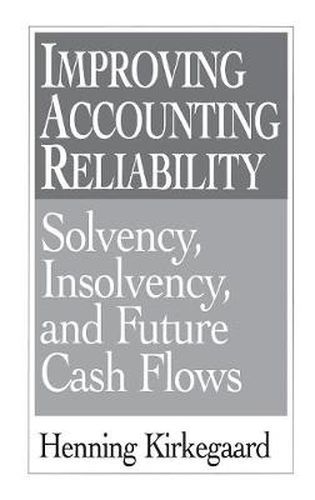Readings Newsletter
Become a Readings Member to make your shopping experience even easier.
Sign in or sign up for free!
You’re not far away from qualifying for FREE standard shipping within Australia
You’ve qualified for FREE standard shipping within Australia
The cart is loading…






In most cases, the balance sheet published prior to a business collapse gives no warning signals. Indeed, it often shows a comfortable owners’ equity, and thus the auditors fail to sound an alarm in time. The author of this book attributes this largely to the inadequacy of financial statements. So unreliable are they that even the most meticulously prepared statement cannot give a true, fair view of a business’s financial health. Statements should be dynamic, he says; current, complete and comprehensible. Most importantly, instead of focussing on profit and owners’ equity, they should concentrate on a firm’s solvency or insolvency. It then becomes possible, using modern technology, to anticipate liquidity problems before they occur, thus limiting or even preventing future losses. This is intended to be the essence of the model Kirkegaard proposes and develops. Some of the ideas that Kirkegaard offers in his book are: the accounting theory which we know at present has been in a state of what can only be described as deep dogmatic torpor; enterprises which are already insolvent but not yet illiquid are dangerous to their creditors; the truth is that it is impossible to describe the financial position of a business enterprise using traditional financial statements; the concept of time has been a stepchild in accounting theory; it is wrong to believe that the task of accounting is to find out what the financial position is. Accounting is concerned with what we can say about the financial position; and the financial statements of the future can be made logically complete and therefore clean and easy to understand. They can also be made up to date, and used to show the financial situation right now. And this is what will make them reliable.
$9.00 standard shipping within Australia
FREE standard shipping within Australia for orders over $100.00
Express & International shipping calculated at checkout
In most cases, the balance sheet published prior to a business collapse gives no warning signals. Indeed, it often shows a comfortable owners’ equity, and thus the auditors fail to sound an alarm in time. The author of this book attributes this largely to the inadequacy of financial statements. So unreliable are they that even the most meticulously prepared statement cannot give a true, fair view of a business’s financial health. Statements should be dynamic, he says; current, complete and comprehensible. Most importantly, instead of focussing on profit and owners’ equity, they should concentrate on a firm’s solvency or insolvency. It then becomes possible, using modern technology, to anticipate liquidity problems before they occur, thus limiting or even preventing future losses. This is intended to be the essence of the model Kirkegaard proposes and develops. Some of the ideas that Kirkegaard offers in his book are: the accounting theory which we know at present has been in a state of what can only be described as deep dogmatic torpor; enterprises which are already insolvent but not yet illiquid are dangerous to their creditors; the truth is that it is impossible to describe the financial position of a business enterprise using traditional financial statements; the concept of time has been a stepchild in accounting theory; it is wrong to believe that the task of accounting is to find out what the financial position is. Accounting is concerned with what we can say about the financial position; and the financial statements of the future can be made logically complete and therefore clean and easy to understand. They can also be made up to date, and used to show the financial situation right now. And this is what will make them reliable.